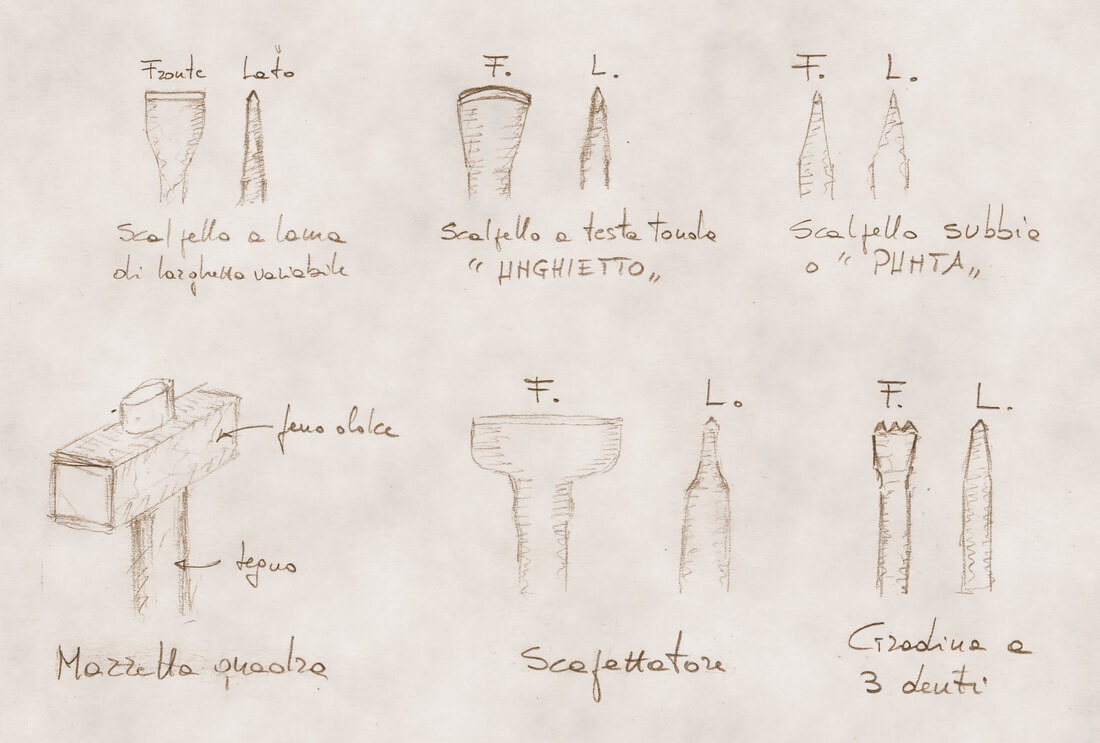
Antique impact and percussion tools for the handcrafted marble manufacturing
The antique impact and percussion tools are used in the traditional handcrafted stone manufacturing. They are necessary to break, to extract blocks, to rough-hew, to rough-cut and to shape the material through a series of beats.
In the past, these tools only worked with the manual movement, now also using the compressed air, through a connection for the insertion in the pneumatic hammer. In this way the sculptor gets less tired and can control and measure the impact power.
The choice of the suitable tool is very important for the result you want to obtain and for the optimization of time and resources.
The percussion
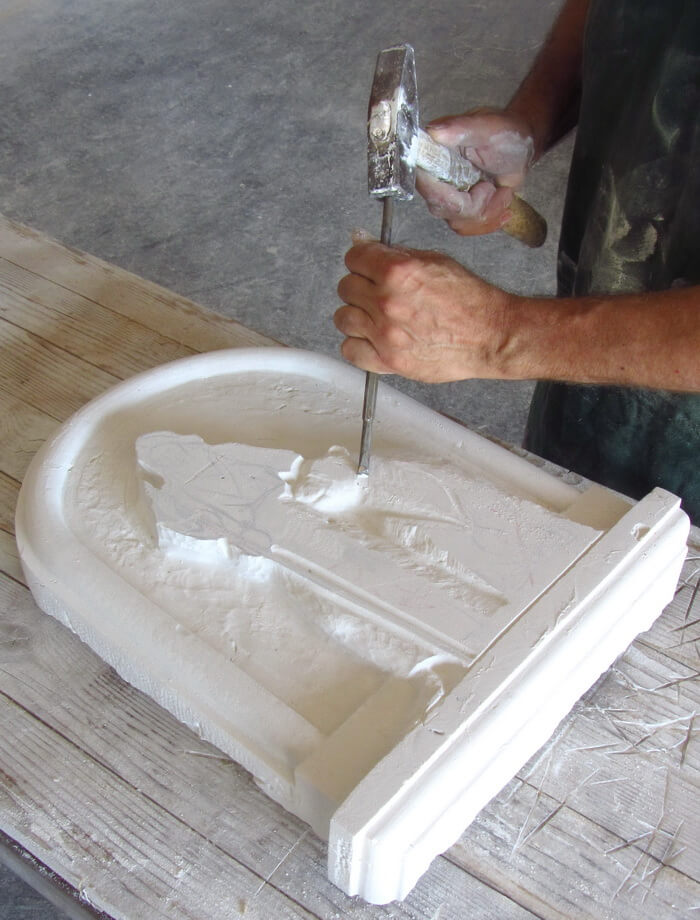
The percussion is the working of a tool through beats and can be:
- direct: when the tool hits the stone directly, such as the pick
- indirect: when 2 tools are contemporarily used: a tool hits on a cutting tool which in turn hits the stone, such as the mallet used in combination with the chisel
The cutting edge
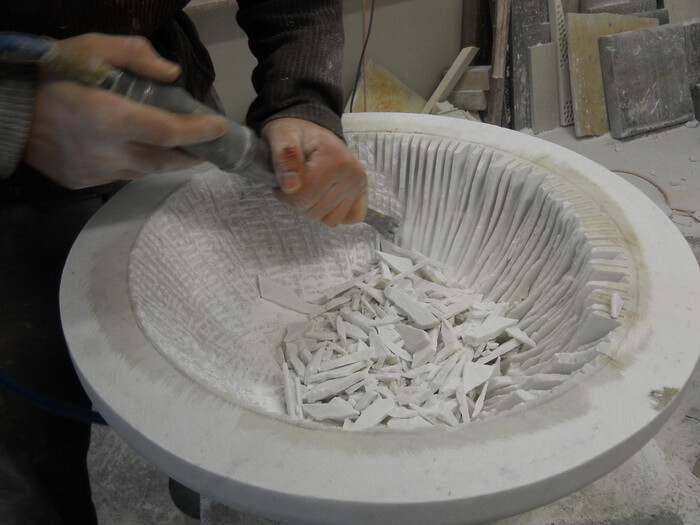
This is the part that hits the stone directly and can be of various shapes and dimensions. Most of them are in metal, hard metal or tempered steel. The cutting edge characterizes, in an exclusive way, the tool leaving a specific mark in order to make different manufacturings.
Main antique percussion tools still in use today
Pick
Light tool, but quite long and linear, with single or double point to extract stone blocks. Generally, with few pick hits, the soft stones open up subdividing in blocks.
Small pick
This tool is similar to a small pick, it has a cubic head equipped with two opposite points. Sometimes it is held with both hands in order to directly hit the stone with the points at 90 degrees embossing the surface with more power and precision, leaving a surface studded with little irregular hits of different depth.
It was often used in the Middle Ages to hit with the flat part on another cutting tool.
Mallet
This tool weighs about 5 kg and it is used to come off big pieces from the block or to shatter some parts. Generally, it has the handle in wood and the head in hardened steel. It is used to give single hits in the direction perpendicular to the surface, turning the edge of the surface towards the part of the material that has to be removed.
Mallet, small mallet and hammer
They are used as cutting tools engine. Generally, they have the handle and the head in wood, iron or tempered steel. They have various shapes, dimensions and weight that are different from each other according to their specific intended use and to the physical complexion of the sculptor.
Small hammer
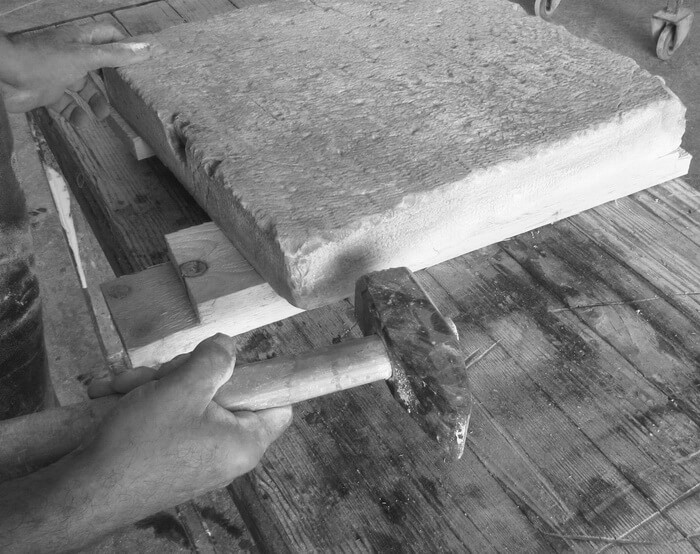
This tool is a particular hammer with two cutting points opposed and different from each other, with small and thick pyramidal or conical teeth. It is used to hit the stone directly, especially the flat surfaces. It makes a finishing called hammered, irregular and variable according to the cutting edge typologie.
Bush hammer
This hammer has a square head and regular teeth but with a variable dimension and number allowing to obtain different results. It is used to shatter the marble in many little splinters. It is used to execute a finishing called bush-hammered, with a granular aspect also known as “orange peel” effect.
Wedge
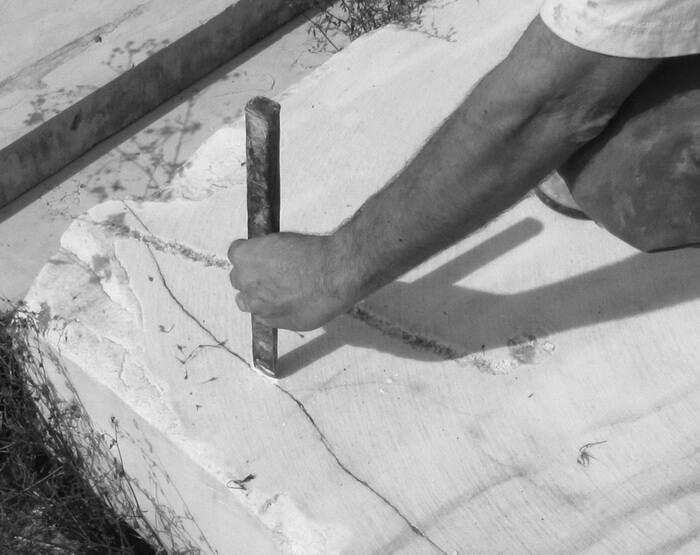
This tool made of wood or metal is used to break the stone. Hitting with the hammer on a wedge stuck in a stone crack, we cause a stone fracture.
Punches
Big and squat iron tools, long about 12/15 cm, with a wedge shape and conical or pyramidal points. They were stuck in line in the holes and then hitted at the same time to break the stone blocks.
Point chisel
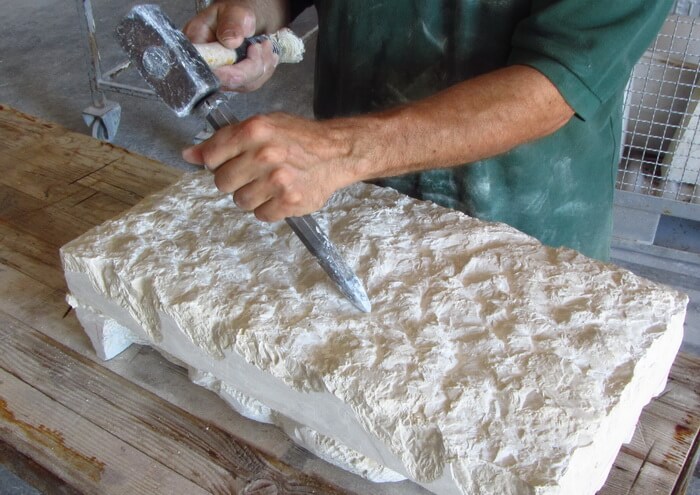
It is a steel point bar with a round, square or octagonal section of different dimensions. It is hitted with the hammer. It is easier to control so more suitable to rough-cut and to rough-hew the stone.
Chisel with round point
Mainly used for the granite manufacturing or to rough-hew the stone.
Pitching tool
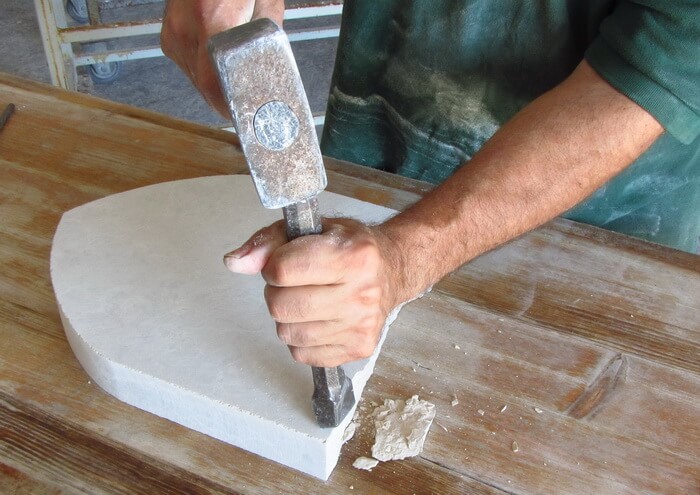
This hand tool is very solid and squat and it has a flat blade long about 18 cm. It is used to inaccurately remove stone parts of medium size in order to intentionally obtain a rough finishing.
Tooth chisels
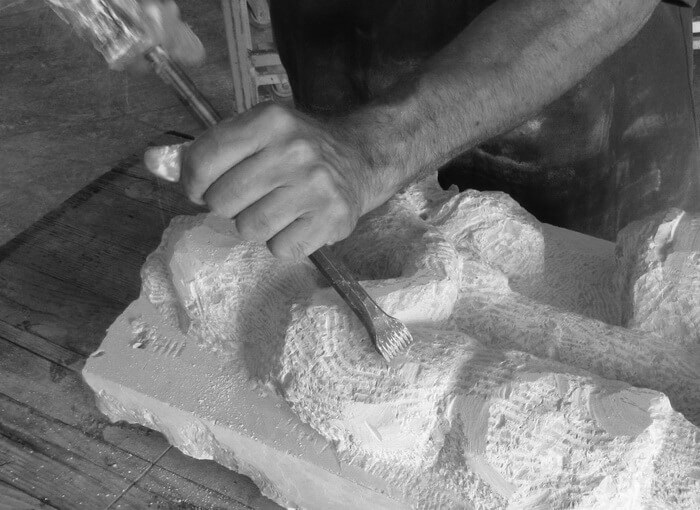
This tool is similar to the point chisel but the final part is sprinkled with points called teeth and it is particularly suitable for the sculpture of the marble. It is obliquely held and hitted with the hammer to create a kind of first smoothing with grooves and parallel lines more or less thick. Often it is used to remove the protuberances left by the point chisel and to give a first shaping to the solid stone.
Chisel
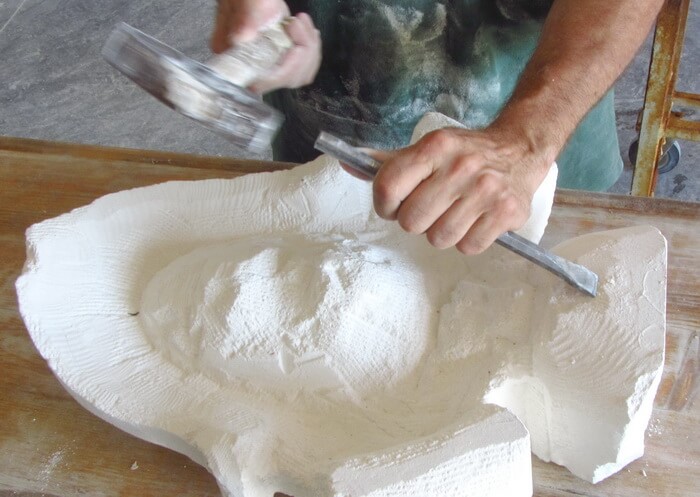
Wide chisel
It is the most well-known and used tool. It can have different dimensions and shapes of cutting edge but generally is flat. It is used to remove parts of material in the form of splinters and to rough-cut and to carve. The rough finishing is made with a wide chisel, while the finishing touch is made with a flat one to better smooth the surface. It is able to produce different shading effects on the basis of the edge with which it is held and by the intensity with which it is hitted.
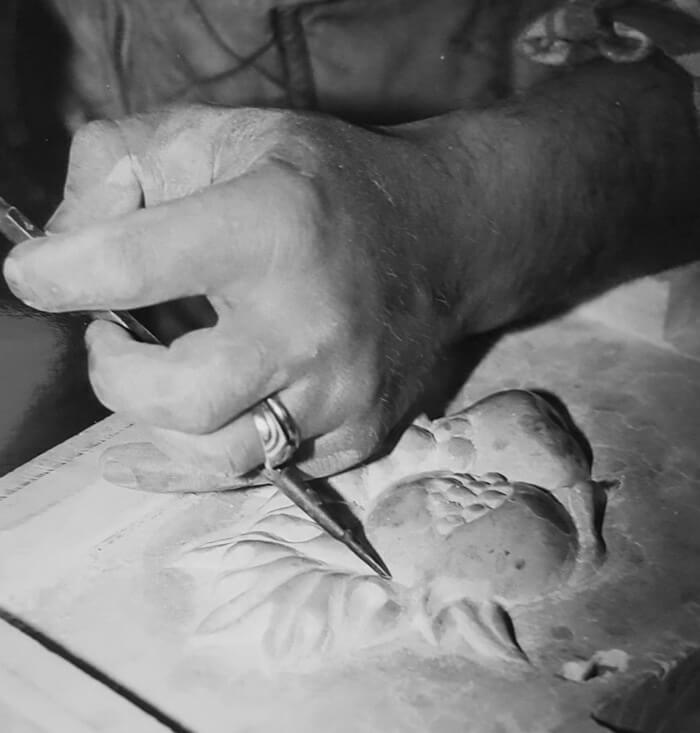
Every sculptor chooses the shape and the dimension that he prefers
according to the manufacturing to be done, to manual skill, to ability, to physical presence and to personal experience.
Rounded chisel
Chisel with a round head, thin but solid, used to make thin carvings in depth such as in undercut. It was already used in the Middle Ages to hollow out the grooves.
Today we still use some of these tools
to safeguard a tradition that has ancient origins.
We try to reconcile the methods of the past with modern ones.
Among the various manual antique tools, there are also the abrasive tools that are necessary to cut, to pierce, to give depth, to smooth and to polish through a rubbing and friction action.
This article contains general information. For questions and curiosities leave a comment below. If you wish to be contacted, please fill out the form.
